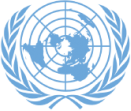Madam\Mister Chair,
As we reflect on the progress made since the Beijing Declaration and Platform for Action, and as we chart the course for future advancements in gender equality, I would like to highlight key elements of the Beijing +30 outcomes in the Lao PDR as follows:
1. Key elements of the outcome of Beijing + 30 in Lao PDR: Mechanisms for gender equality and the empowerment of women and girls: The Lao PDR actively maintains three national mechanisms: firstly, the government represented by the National Commission for the Advancement of Women, Mother and Children (NCAWMC); secondly, the mass organization, represented by the Lao Women’s Union; and thirdly, the legislature, represented by the National Assembly’s Women Caucus from central to grassroots levels.
2. Enforcement and strengthened operationalization of the implementation of the national legal and regulatory frameworks on ending violence against women and gender equality: Government of the Lao PDR has created specific laws including the Law on Gender Equality, the Law on Combating and Suppressing Violence against Women and Children, the Law on the Development and Protection of Women and Interests; Vision 2030, the National Strategy and Action Plan for Gender Equality, and the National Action Plan to Prevent and Eliminate Violence against Women and Children.
3. Economic participation, employment and opportunity:
• More women than men open businesses out of necessity because they need a source of income (31% of women, 15 percent of men) or were unable to find another source of income (65% of women, 34 percent of men).
• 60.2% of individuals who ran household businesses were female (39.8% for males), a significant increase from 2013 data (49.4% women, 50.5% men).
• 52% of female-owned firms were micro-sized (8 percent for male-owned firms), 45% were small (57% for male-owned firms), and 3% were medium (30% for male-owned firms).
4. Access to affordable quality health care including sexual and reproductive health and reproductive rights:
• The maternal mortality ratio fell by 78.7%, from 579 to 126 deaths per 100,000 live births.
• Health service delivery reforms have been in operationalisation including improving accessibility and the referral system, with a focus on primary health care.
• Lao PDR has integrated gender equality and women's empowerment in national frameworks, scoring 96 out of 100 on SDG Indicator 5.6.2 which measures access to sexual and reproductive health and rights.
5. Quality education, training and life-long learn for women and girls:
• MOES mainstreams gender perspectives, sex education, living skills, reproductive health, and gender teaching-learning intervention within STEM subjects at secondary and higher education levels.
• Government issued Decree on lifelong learning to ensure all Lao citizens, regardless of gender, access to all forms of education. The decree reflects the government's commitment to support all citizens to access the education system by providing resources and incentives for lifelong learning.
• The gender equality index in higher education shows a significant gap, with the index declining from 0.65 in 2016 to 0.14 in 2020 at the PhD level.
Rural Women: Recognizing persistent poverty, the government has given priority to address the poverty of the people that still exists by defining it in the national socio-economic development plan from time to time and the development plan of the sectors and localities. and there is a decree of the prime minister to address poverty by focusing on poor families which is an important measure to raise funds. To further incentivize contributions, the government uses competitive measures to praise and facilitate those who contribute financially and technically support poor people in production and raising funds from international financial institutions and friendly countries through low interest loan mechanisms.
Thank you, Madam\Mister Chair,

